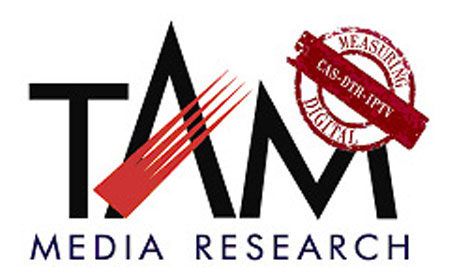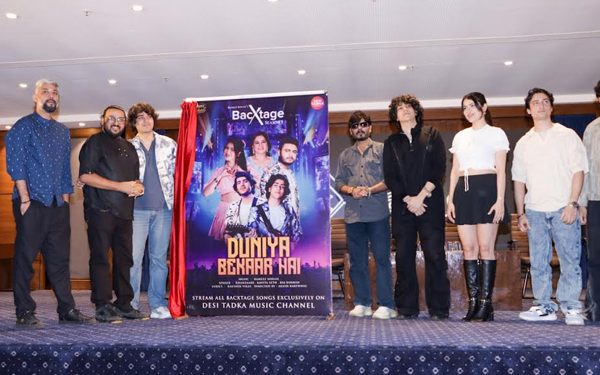MUMBAI: Earlier this week, we carried a report on TAM Media CEO LV Krishnan’s appeal to the radio industry to work closely. Krishnan had said that it was receptive to suggestions to redo its radio measurement service (RAM) based on industry feedback and that it has helped grow the radio industry as it had helped advertisers gain confidence in the audio medium.
Krishnan told Radioandmusic.com (RnM) that RAM, which follows the diary-entry method- whereby a selected person maintains a diary of radio stations tuned in to – was selected and implemented with full knowledge and approval of its subscribers- the radio industry.
TAM Media Research expanded its service offerings for television to radio audience research in 2007 with the launch of RAM as a joint venture service between IMRB International and Nielsen.
Currently RAM offers radio listenership data for 13 key Indian cities. While four of these – Delhi, Mumbai, Kolkata and Bangalore – got added during the early days of RAM’s launch, the remaining nine cities – Ahmedabad, Chennai, Hyderabad, Indore, Jaipur, Kanpur, Lucknow, Nagpur and Pune – became a part of regular half yearly sweeps study starting October 2011.
Its sample is 480 individuals strong in each of the four metros for ‘continuous’ weekly data reporting and across each of nine cities for half yearly sweeps using the diary methodology. This methodology is still in use by some of the largest markets globally, TAM Media said.
Now, the private FM radio industry has responded by saying that there is a lot be desired as far as accuracy, authenticity and relevance of RAM’s ratings are concerned. They have also stated that TAM Media is not open to walking the talk.
Says Radio City COO & president Ashit Kukian: “Delhi seems to be a consistent problem and this is not something that we are saying now, it’s been since the last three years. They have to be far more robust in their methodology, at least in terms of reportage that happens in certain segments where we show concern. They should be proactive to our concerns rather than saying that what they are doing is all right.”
“Regular anomalies have been found in the data by operators. The data for instance doesn’t correlate well with programming and marketing efforts across stations and competing brands. Research undertaken internally indicates that radio consumption is growing in some markets, but this has not been reflected in RAM data. (We also) have been suggested setting up a panel that includes stakeholders to make the system transparent. RAM has not taken any measures in this direction,” says Reliance Broadcast Network (RBNL) chief executive officer (CEO) Tarun Katial.
“We have stopped subscribing to RAM in all four markets just like most radio players including Mirchi, City and Red who find the service unsatisfactory. Any study which offers a higher sample size that is statistically significant, transparent in its system and processes and electronic gathering of data will succeed. Till then all these studies are compromises of the highest order,” highlights Radio One managing director Vineet Singh Hukmani.
“There is a need for an electronic measurement system to be put in place, instead of the current diary method that’s currently used by RAM does not work for the Indian market, the methodology needs to undergo change. Research undertaken internally indicates that radio consumption is growing in some markets, but this has not been reflected in RAM data,” Katial adds.
“RAM itself can become a piece of good research. We have total faith and confidence in LV (Krishnan) and his capabilities. The sample size (currently 480) needs to become three times more; the field work needs to be monitored and controlled to avoid any compromises. I am told electronic metering is foolproof. Even if it isn’t, it will anyways be better than a manual diary system. It’s not yet come because RAM was unable to keep the prices low. There was too much of internal profits and royalties build into the pricing. Ultimately, it just became too expensive for a small industry like radio,” expresses ENIL executive director & CEO Prashant Panday.
“We at Radio City believe that there is a reason for RAM to exist but we need measureable data that is acceptable to all. We have been pressing for discussions but the response has been far from satisfactory. I have only one concern that we have gone three-four times to RAM but have not got the response that they are that open to discussions,” Kukian shares.
The radio industry is also divided on the relevance of RAM, its weekly data and other services to the industry. Some question the need for weekly listenership data for the industry- many stations feel the figures provided by RAM are not taken seriously by advertisers and that it doesn’t play a significant role in expanding audience base or generating more ad revenues.
“Advertisers are happy to use IRS (Indian Readership Survey) because it is much more reliance for measuring reach (cumes). Since radio habits don’t change very often, even a quarterly research is good enough. Radio will not be affected at all (if RAM issue is not resolved). Anyways, no one uses RAM very seriously. All agencies use multiple sources of data like IRS, and in-house researches. Besides, radio is not bought only on listenership numbers, even though that is important. Research is bought for network size, creative solutions developed for clients, broadcaster’s brand strengths,” points out Pandey.
“The radio industry has enough confidence from clients and agencies and does not need RAM. Global radio monitoring companies like Arbitron etc have made huge investments and are very serious unlike the situation here in India,” reiterates Hukmani.
Others however say the industry will be adversely affected if neutral third party provided data is not available to measure changes.
“Sure it does (RAM’s absence will be felt by the industry). For a channel to earn advertisement revenues in the radio industry, its listenership numbers are what advertisers consider,” says Katial. He, however, cautions that if the numbers are incorrect, then there is obviously going to be a revenue loss.
The message is clear: something has to give in this faceoff. TAM says it is open to transformation, but it needs industry money to bring in the change. The radio industry says the research house has to get its house in order; that TAM is just obfuscating the issues.
With Phase III likely to come in the not-too-distant future, both will have to come to a resolution. Failing which, it is quite likely private FM may not be able to live up to its true revenue potential.













